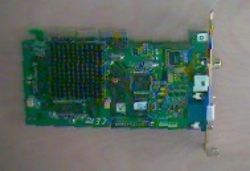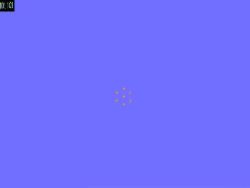|
Diamond Viper II
Garra Cornish |
||||
|
Diamond has recently teamed up with S3, and the Viper II using the new Savage2000 chip is their first new offering. This new card uses an integrated hardware texture compression engine called S3TC, as well as having S3TL Transformation and Lighting (T & L) capability. Diamond is directly targeting the gamer market with this card, and although the OpenGL drivers available are optimized for the Quake 3 and Unreal Tournament type games, we put it through a battery of test that directly relate to the combat simming crowd. Read on and see how the Viper II stacks up against the TNT2 and SDR GeForce.
 Fig. 1 Viper II Model Z200
The Viper II was rumored to be clocked in the 200 MHz range, however something must have gone awry with that plan, since the board we received was clocked at 125 MHz, with a memory clock speed of 143 MHz. Check out figure 1: Instead of a fan the card uses a heat sink for cooling. The installation of the Viper II presented no problems, and we used the latest drivers from Diamond's website instead of the included CD drivers. The control panel is somewhat similar to that of a TNT2 board, however there is a problem. When testing Falcon 4.0, we realized that the Viper2 Diamond drivers had no adjustment for texel alignment. Since this board and its drivers are relatively new, and no "reference" drivers exist yet, there is little information out there regarding a possible solution to this problem. We at the COMBATSIM.COM office tried every option given in the control panel, and nothing would correct the muddled fonts in the HUD and MFD's in F4. Perhaps newer drivers will correct this problem once they become available.
|
I wish Falcon 4 could run a timedemo... Writers who review new video cards for the first person gaming scene are blessed with a couple of games that are capable of running various "timedemo's" that give an average frames per second (FPS) report after a short test. Quake 3 is probably the game most used to test the performance of various video cards. On a side note, I personally tested the Viper II's performance in Quake 3 and Unreal Tournament on my gaming rig using 32-bit color, and it was very, very close to the GeForce's frame rates. That being said, we know that you loyal COMBATSIM.COM readers probably don't care much about Quake 3 results, but this was one of the Viper II's redeeming qualities, and it would be unfair to omit it. In order to give the combat simming gamer an idea of how the Viper II performs, we compared it to a Creative Labs TNT2 Ultra and a Creative Labs GeForce SDR in a few various simulations. It was difficult to pick which games to use, since there is no combat simulation that offers a timedemo style test. We settled on Falcon 4.0, Flanker 2.0, World War II Fighters, and Rogue Spear. These four games each have a couple of things in common. They are all very popular, and they are all system hogs. In order to have a consistent benchmark for our tests, all the games used had the current patch applied, and no custom cockpits or graphics. We understand that some of these custom modifications can increase performance, however we thought it best to use the most current version of each game in its stock form. The one exception is Falcon 4.0, where we used the iBeta 1.08i2 patch, since it is generally accepted as the most current F4 patch. Unlike the other three games, we also tested F4 video performance in a campaign, and not just a regular mission. Using the same graphic settings, we played each mission and recorded screen shots of the average FPS performance using the FRAPS FPS measuring utility (FRAPS).
 Fig. 2. WW II Fighters: Geforce SDR @ 1024x768 32 bit To Page 2 of 4 . . .
|
|||
|
Copyright © 1997 - 2000 COMBATSIM.COM, INC. All Rights Reserved. |
||||
